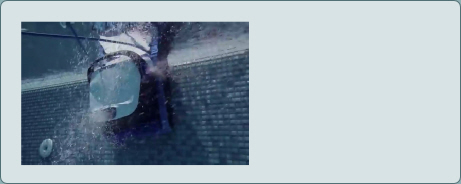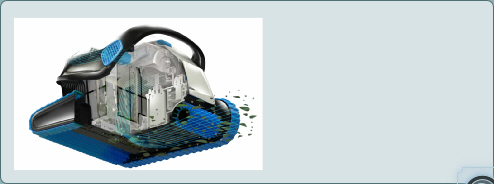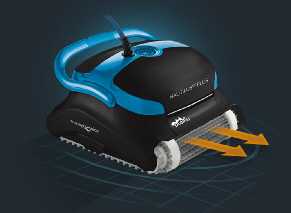



Maytronics Pool Robot Repair



Pool robots are fun to watch and convenient to operate. They can continue working on their own so that you have a nice pool floor and water that is relatively free of debris. Not only do they crawl across the floor of the pool but they will climb up the walls all the way to the water level. When they reach the water level they know when to reverse direction.
A friend who owns a Maytronics Dolphin Nautilus CC pool robot experienced their unit not running as it usually had.
The unit would walk itself forward a new inches, stop, run itself backward a few inches, then stay in one place while the top impeller ran, and then nothing else. For the price that these units cost it is very frustrating to consider replacing with a new unit. This unit had only one year of use behind it.


The filter screen is a crucial element to the impeller resistance load
My first interests when beginning to disassemble the unit was how it was able to detect the water table. I was expecting a float attached to a sensor. I took the entire unit apart, even down to the two motors (in separate pieces). Nothing looked obviously out of order.
Not much information was available online as to what could be causing the malfunction or how the units are ‘smart’ to know the water level, but I did have some instinctual ideas. My idea focused on the top impeller that draws water through the base of the unit inlets, through a screen filter chamber, and eventually out the top (hence the Dolphin name). The lower water pressure at the underside of the unit and the high pressure from the blowhole exhaust is what keeps it walking on the wall.
Instinct told me that when the unit is at the top of the pool it is partially ingesting air into the inlets, This is evident in videos of the unit where you can see the ‘blowhole’ shooting out water and air. Try and imagine drinking a milkshake with a straw and then getting to the bottom where air is draw up the straw and you get that slurping sound. What you also notice is that the amount of resistance to flow is less when air is passing through the straw. This was where I really considered the internal resistance of the unit and how the impeller motor may be sensing the change.
Indeed, I was able to find some trouble shooting information that did seem to confirm my hunch. I reassembled the entire unit and submersed it in large plastic tub filled with water to simulate a pool. My plan was to hold my hand over the blowhole while it was shooting water during the brief forward and backward motions it had always done. My hunch was confirmed as the unit kept moving the tracks in one direction and would not reverse until I removed my hand from the blowhole.
From this I payed more attention to the fact that the filter screens were heavily ripped. All of the rips were causing water to split past and the resistance sensed by the impeller motor was never reaching normal levels. To fix the screens temporarily l I took thin strips of duct tape and placed then over the rips. This worked and the unit was brought back to the owner’s pool for an extensive test. The owner was also glad to know that the repair for the unit would only be to order a new set of filter screens.
In conclusion, if you are having trouble with your pool robot, don’t overlook the condition of your filter screens as they present a normal restriction to the impeller motor (load) and this is how the unit senses when it is at the top of the water table and eventually runs the other way.
The pool robot detects motor load changes to know when it is at the top of the pool
In newer models a side exhaust vent is used to push the unit sideways
